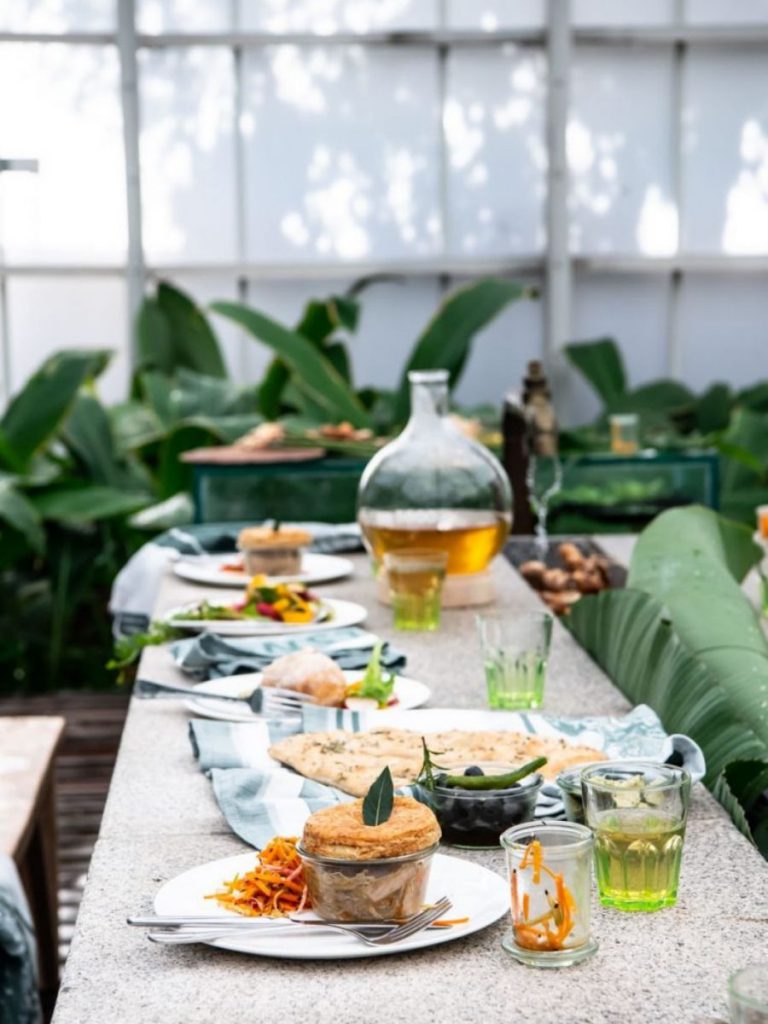
Restaurants
Spa
Day Visits
Shop
Functions
16°C
January 2nd, 2020
Food sleuths and clued-up plantophiles will have noticed the presence of certain little rhizome that we are especially fond of here at Babylonstoren and that, despite its unassuming appearance when harvested, is one of the world’s most celebrated culinary ingredients.
Noted for its distinctive aromatic flavour that settles somewhere between earthy and spicy, with notes of citrus and ginger, turmeric is widely used for its powerful health benefits as well as its intense colour that infuses food with a golden glow – hence the term ‘Indian saffron.’ Turmeric is also a plant of extraordinary intrigue and beauty when in bloom, with pink- and yellow-tinged white flowers in shapes that bring to mind the crowns of pineapples.
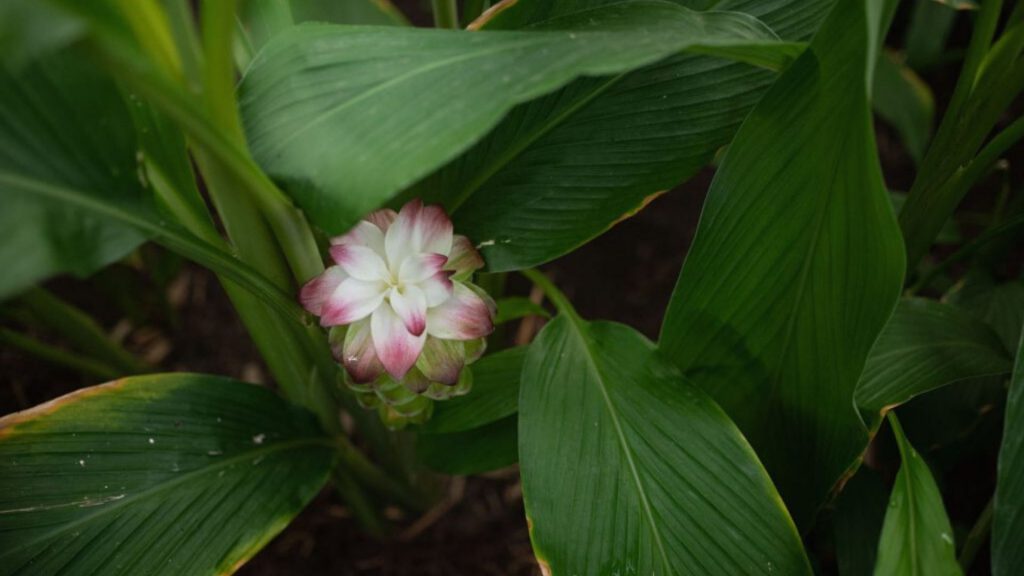
Though having only recently entered the mainstream as the ingredient du jour, turmeric – or Curcuma longa as it’s known by its biological name – has been used for millennia everywhere from China and India to Jamaica and West Africa. While it’s likely that just about every bite of curry you’ve tasted in your lifetime contains turmeric, there is archaeological evidence indicating its use over 4 500 years ago. It has also long been used as a sacred root for body embellishment during cultural ceremonies. The Hindu tradition of Haldi, for example, sees the bride and groom having a tincture of oil, water and turmeric applied to their bodies as a blessing before their wedding.
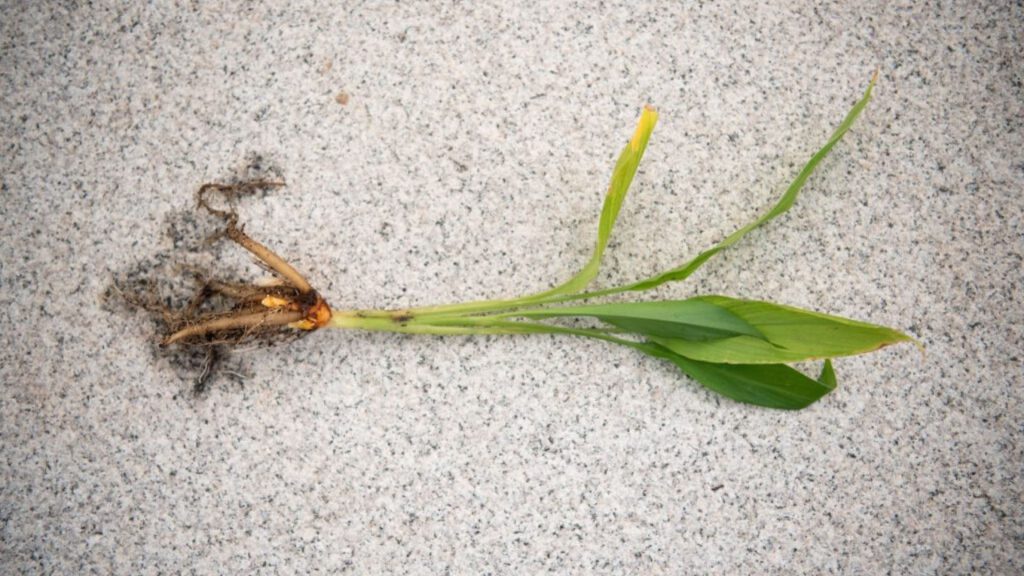
Other than its gastronomical and religious uses, turmeric was grown and harvested as a natural textile dye – for centuries the distinctive yellow of Buddhist robes got their colour from turmeric. In contemporary fashion circles, one of the world’s largest fashion dye houses, Tintoria di Quaregna in Italy, has made headlines for its return to plant-based formulas with turmeric featuring prominently. Hip cosmetics brands such as NARS, Kiehl’s and Urban Decay have also been inspired by turmeric’s ancient cultural use as a beauty aid (it’s said to get skin glowing) and incorporated it into everything from make-up and foundation to face masks and moisturisers.
And then there is the evidence-based healing and health properties of turmeric, long used in the practice of natural medicine – in particular Ayurveda, the Indian system of holistic healing. Curcumin, the compound responsible for turmeric’s vivid colour, is known to have potent antioxidant, anti-inflammatory and anti-bacterial properties. This is a plant that packs a lot of punch!
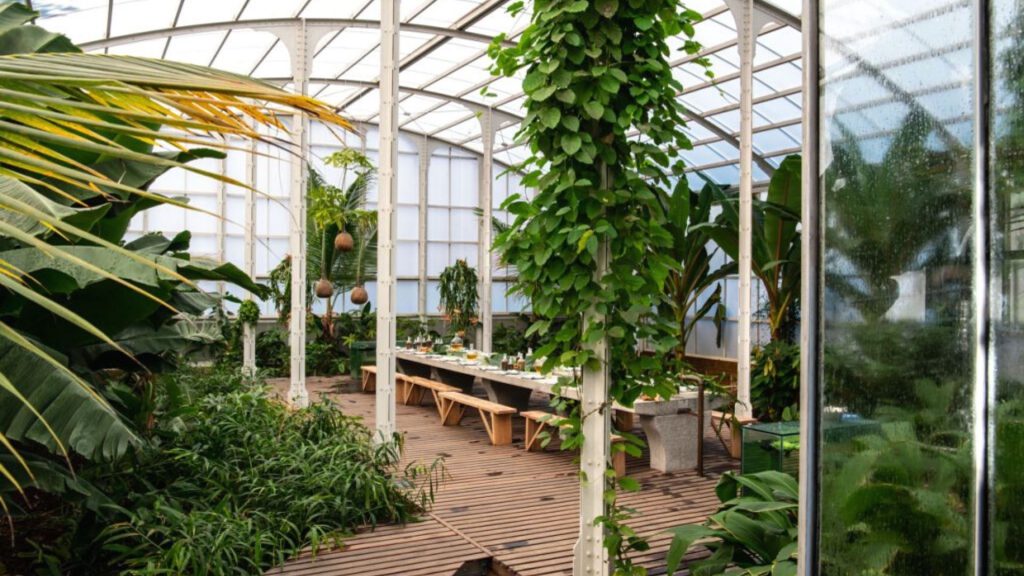
At Babylonstoren the relationship between the garden and our kitchens is utterly symbiotic and central to a culinary philosophy that celebrates fresh, seasonal flavours. Thanks to our gardeners, our food team is well supplied with fresh turmeric and it makes several appearances on our menus: from Babel and the Bakery to the Greenhouse and adjoining Spice Garden.
Turmeric-laced must-try’s at the Spice Garden include: warm, spiced turmeric root tea or coffee; curry leaf and turmeric bread slathered with our signature handcrafted farm butter with ginger, curry leaf and turmeric (heavenly); and chef Jaco’s delectable charcuterie that incorporates aromatics such as fennel, oregano, smoked paprika, chilli oil, cloves, pepper, coriander and turmeric root.
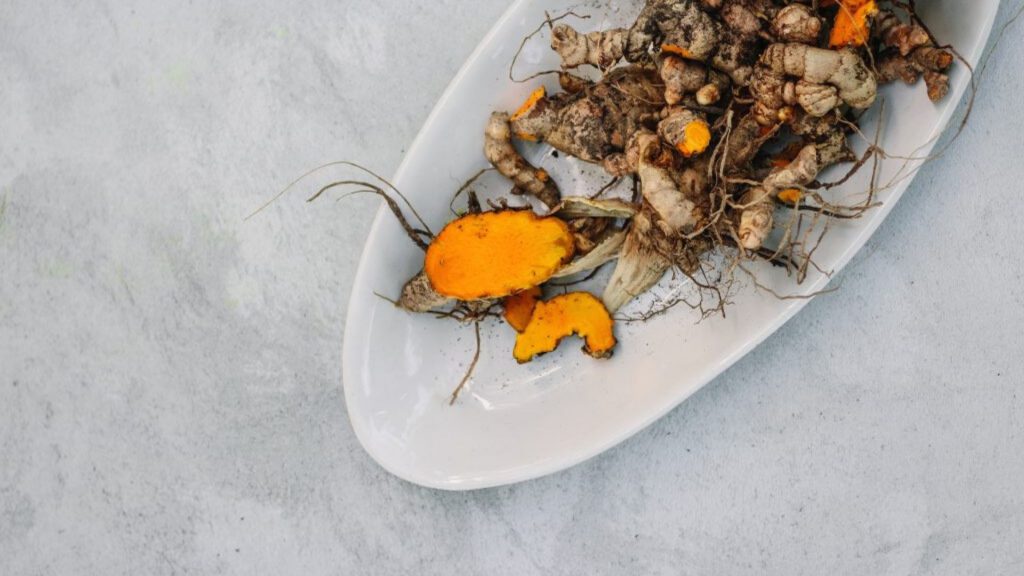
Turmeric is versatile, mild and earthy. At Babylonstoren we use it for salad dressing to tea and everything in between. Our chefs always like to use it fresh and in season.
